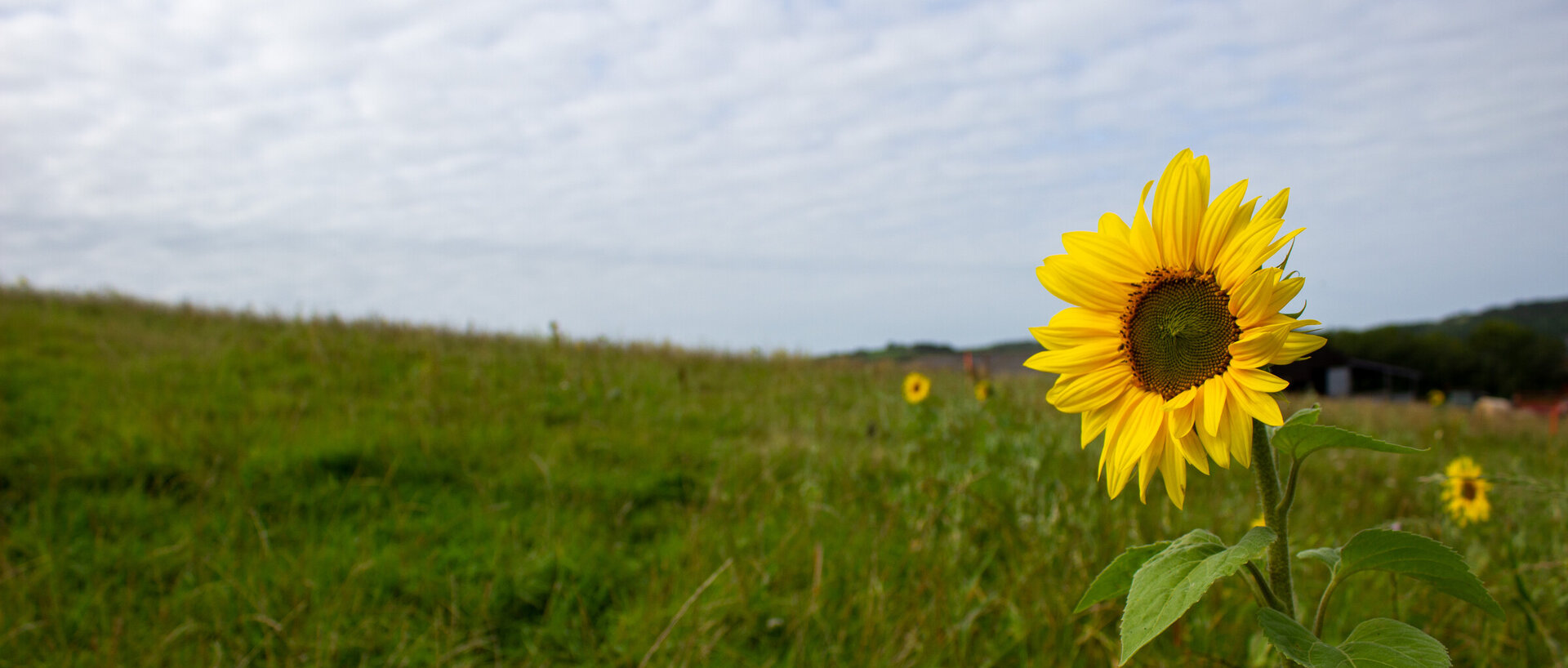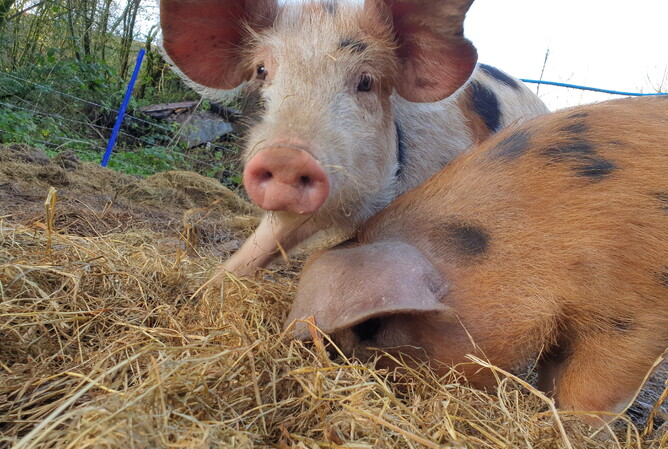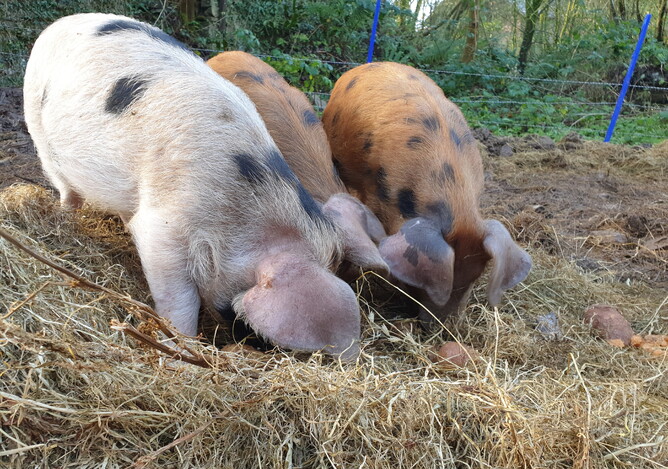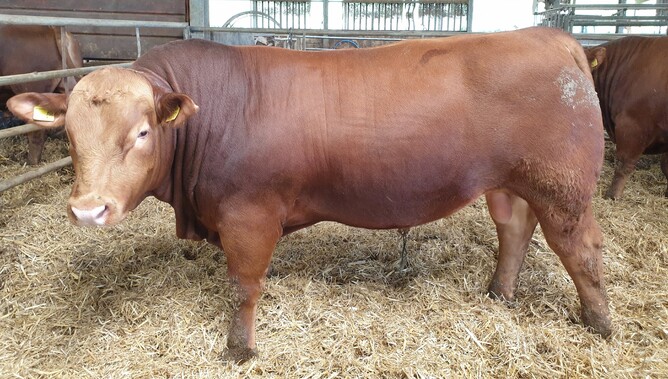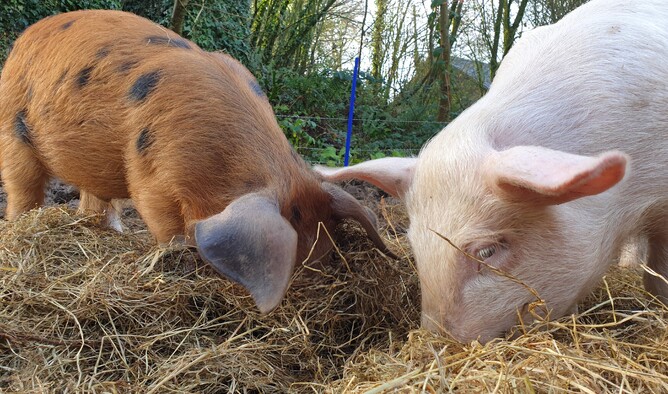A few weeks ago we welcomed some 8 week old Gloucestershire Old Spot cross Oxford Sandy and Black piglets to the farm. All of these 12 piglets are from the same litter.
Finding new livestock
We always think very carefully about where we buy any livestock from. We like to buy animals which we know have had a happy life before our farm so we can help support the farmers behind them. Half of our hens arrive as older, ‘retired’ hens from a free range farm, so as well as giving these hens a longer life and the benefits of moving onto fresh pasture frequently, we are helping to encourage outside, free range egg farming.
These particular pigs came from a free range farm, so they were able to dig and chase each other around like little pigs love to do! We chose these piglets because of their breed. Being a cross of two traditional British breeds (Gloucestershire Old Spot and Oxford Sandy and Black), they can grow well on a diet largely made up of what we can grow in the pasture here at Redwoods Farm. Being fed less grain products, our traditional breed pigs are slower maturing so we raise them until they are 8 to 12 months old.
Quarantine
When introducing new animals onto the farm, there is always a disease risk. This is why we quarantine anything new for a while just to make sure they won’t pass anything on to any of our other livestock. Having been here for a few weeks, the new little pigs have just met our other young pigs. Being just a few weeks older, Penelope and Fi’s piglets soon accepted the new arrivals into their group.
Self-replacing herd
At Redwoods Farm we try to keep our herds and flocks as closed as possible. This means we only buy in more livestock when it is absolutely necessary. It allows us to have more control over the animals we keep, breeding for particular traits such as worm resistance or good maternal instincts. It also reduces the risk of disease as there are very few new animals bringing in potential infections.
We only bring a few new rams into our large sheep flock every year, so the flock is self-sustaining (read more about our sheep flock in The start of the shepherd's year). All of our breeding cows and bulls are now born on the farm, which is our aim with our pig herd.
Pictured below is our youngest bull, Vladimir, who was born here on the farm in spring 2019.
Increasing diversity
One thing that needs to be considered when having a closed herd is genetic diversity. Eventually, if no fresh genetics are brought in, hereditary diseases can become more frequent and the entire herd can become vulnerable to changes in environment such as a drought or a new disease. They can become so suited to the farm’s environment that they cannot cope with other conditions, so a large proportion of the herd could more easily be lost in extreme conditions.
With the unpredictable climate and ever evolving pathogens, we want to have a large variety of genetics within our animals. We can do this through Artificial Insemination (AI), so we can gain the benefits of having new stock without the disease risk. This is how we currently manage our cattle herd, choosing the best cows to AI during their natural breeding cycle. They produce calves which grow well and from these calves we can choose a future breeding bull, along with a few heifers.
AI is also how we hope to manage our pig herd in future but for now we aim to keep a few of our new pigs as breeding sows. Find out more about our pigs.
